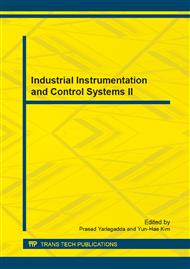[1]
Anderson JP. Computer security thread monitoring and surveillance[R].Fort Washington,PA: Jame P Anderson Co,1980.
Google Scholar
[2]
Heberlein LDias G, Levitt K et al. 1990. A Network Security Monitor [C].In: Jeff Wood, and David Wolber eds. Proceedings of the IEEE Symposium on Research in Security and Privacy. Oakland, California, 1990. Los Alamitos: IEEE Press, 296-304.
DOI: 10.1109/risp.1990.63859
Google Scholar
[3]
Forrest S, Hofmeyr S A, and Somayaji. 1997. A. Computer immunology [C],In: Communications of the ACM, 40(10) 88-96.
DOI: 10.1145/262793.262811
Google Scholar
[4]
Jiangxiong Luo,Susan Bridges. 2000. Mining Fuzzy Association Rules and Fuzzy Frequency Episodes for Intrusion Detection. International [J], Journal of Intelligent Systems, 15(8):687 -704.
DOI: 10.1002/1098-111x(200008)15:8<687::aid-int1>3.0.co;2-x
Google Scholar
[5]
Chris Clifton, Gary Gengo. 2000. Developing custom intrusion detection filters using data mining, in: Saharon Rossett ed. 2000 Military Communications International Symposium, Los Angeles[C],In:California, 2000,Washington, DC, USA: IEEE Press, 440-443.
DOI: 10.1109/milcom.2000.904991
Google Scholar
[6]
Warrender C, Forrest S, Pearlmutter B. Detecting intrusions using system calls: alternative data models. Proc of 1999 IEEE Symp on Security and Privacy[C], Oakland, CA, USA, 1999:133-145.
DOI: 10.1109/secpri.1999.766910
Google Scholar
[7]
Mao Guojun, Wu Xudong, Chen Gong. Mining maximal frequent itemsets from data streams. Journal of Information Science, 2007, 33(3):251-262.
DOI: 10.1177/0165551506068179
Google Scholar
[8]
A Blum, TMitchell. Combining labeled and unlabeled data with Co-training[C]. Proc of thellth Annual Conference on Computational Learning Theory, 1998:131-140.
DOI: 10.1145/279943.279962
Google Scholar
[9]
Boser B E, Guyon I M, Vapnik V. A training algorithm for optimal margin classifier[C].In Proc of the 5th ACM Workshop on Computational Learning Theory,Pittsburgh,1992.
DOI: 10.1145/130385.130401
Google Scholar
[10]
Breimanl. Bagging predictors [J]. Machine Learning, 1996, 24(2):123-140.
Google Scholar
[11]
Schapire R E. The boosting approach to machine learning: An overview [EB /OL]. [2007-12-26].http:/ /www.ccls.columbia.edu /compbio /geneclass/ non_html_files/ Schapire_ boosting_review.pdf.
Google Scholar
[12]
Parmanto B, Munro PW, Doyle H R. Improving committee diagnosis with resampling techniques[C]/ / Proceedings of Advances in Neural Information Processing Systems. Cambridge, MA: MIT Press,1996, 8: 882-888.
Google Scholar
[13]
Dietterich T G, Bakir I G. Solving multi-class learning problems via error-correcting output codes[J]. Journal of Artificial Intelligence Research, 1995, 3 (2): 263-286.
DOI: 10.1613/jair.105
Google Scholar
[14]
Oza N C, Tumer K. Classifier ensembles: select real world applications, Information Fusion, 2008,9(1):4-20.
DOI: 10.1016/j.inffus.2007.07.002
Google Scholar
[15]
http://kdd. ics. uci. edu/databases/kddcup99/task.html.
Google Scholar


